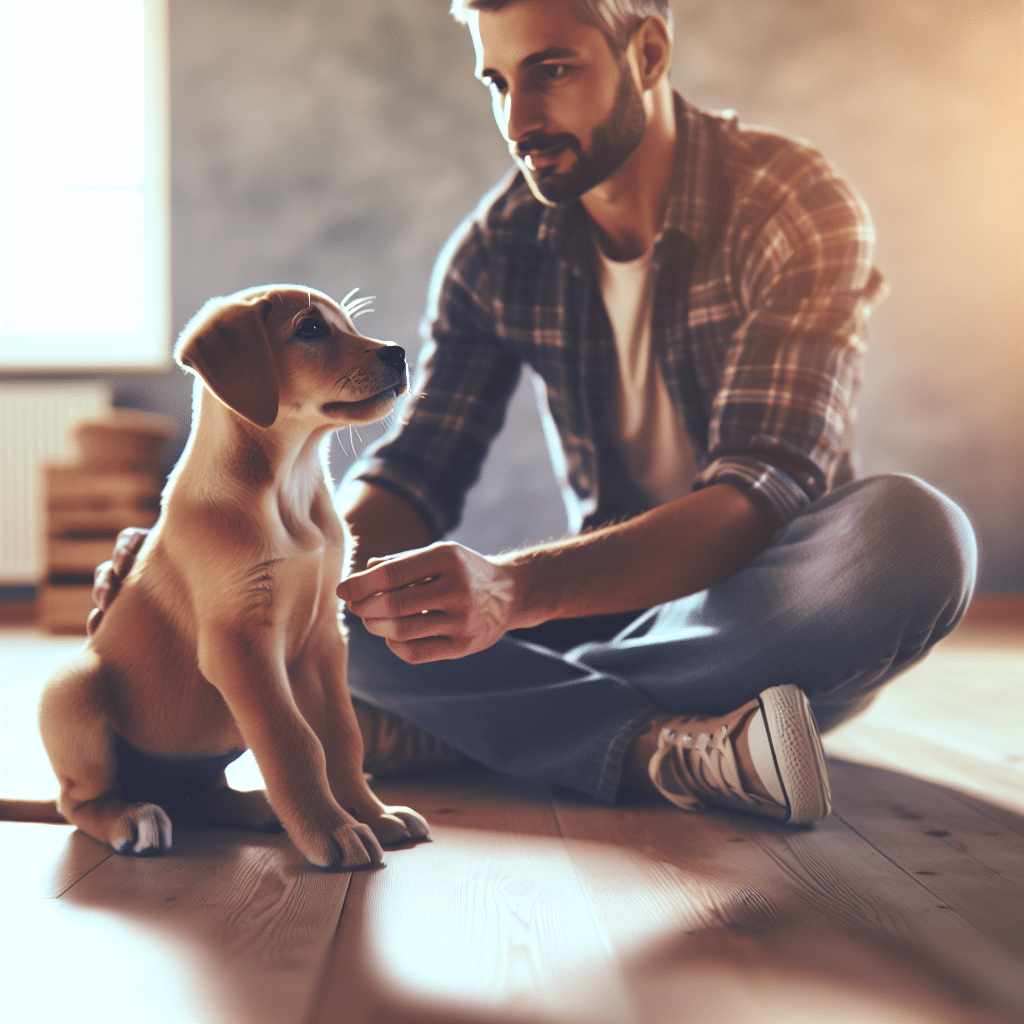
Welcome to the Health & Training Online Lesson for Dog Lovers!
Preventing Aggression Issues in Dogs: A Vital Goal for Every Pet Owner
As dog lovers, we all want our furry friends to be happy, healthy, and well-behaved. One of the key goals in ensuring the well-being of our dogs is to prevent aggression issues. Aggression can manifest in various forms, from growling and barking to biting and attacking. It is essential for every pet owner to understand the root causes of aggression in dogs and learn effective strategies to prevent and manage it.
In this self-guided online lesson, you will discover valuable insights and practical tips on how to promote the health and well-being of your canine companion while addressing and preventing aggression issues. By implementing the solutions provided in this lesson, you will be equipped with the knowledge and skills to foster a harmonious relationship with your dog and create a safe environment for both your pet and those around them.
Join us on this journey to learn more about the health and training of dogs, with a specific focus on preventing aggression issues. Let's work together to ensure that every dog receives the care, attention, and training they need to thrive as a beloved member of the family.
Leash training is an essential aspect of preventing aggression issues in dogs. Aggression can often stem from a lack of control and proper guidance while on walks or in public settings. By teaching your dog to walk calmly on a leash, you are setting a foundation for good behavior and preventing potential aggressive outbursts.
Start leash training early with your dog to establish good habits. Begin in a quiet, familiar environment where distractions are minimal. Use a sturdy leash and collar that fits comfortably. Introduce the leash to your dog gradually, allowing them to get used to the feeling of being tethered.
When walking your dog on a leash, use positive reinforcement techniques such as treats and praise to reward good behavior. Encourage your dog to walk beside you in a relaxed manner, avoiding pulling or lunging. Consistency is key in leash training, so be patient and persistent in your efforts.
If your dog displays aggression while on a leash, seek professional guidance from a certified dog trainer or behaviorist. They can help assess the underlying causes of the aggression and provide tailored guidance to address the issue effectively.
When it comes to preventing aggression issues in dogs, teaching them basic commands is essential. These commands not only help in controlling your dog's behavior but also establish a clear communication channel between you and your furry friend. Here are some fundamental commands that every dog lover should focus on teaching:
Sit Command: Teaching your dog to sit is one of the most basic yet important commands. It helps in calming them down and can be used in various situations to maintain control.
Stay Command: The stay command is crucial for preventing your dog from rushing into situations that may trigger aggression. It teaches them self-control and obedience.
Come Command: This command is vital for calling your dog back to you, especially in potentially aggressive situations. It helps in redirecting their focus towards you and away from potential triggers.
Leave It Command: Teaching your dog to leave something alone is essential in preventing aggression towards other animals or even people. This command can avert potentially harmful situations.
Consistent practice and positive reinforcement are key when teaching these basic commands to your dog. Remember to be patient and persistent, as building a strong foundation of obedience is crucial in preventing aggression issues in your beloved furry companion.
Positive reinforcement techniques are essential in preventing aggression issues in dogs. By using positive reinforcement, you can effectively shape your dog's behavior and create a strong bond based on trust and respect. Here are some key tips to help you utilize positive reinforcement:
Reward Good Behavior: When your dog displays desirable behaviors such as obedience, calmness, or friendly interactions, be sure to reward them promptly with treats, praise, or toys. This positive reinforcement encourages your dog to repeat these behaviors in the future.
Consistency is Key: It's crucial to be consistent in your training methods and rewards. Dogs thrive on routine and structure, so make sure to reinforce good behavior every time it occurs. This consistency helps your dog understand what is expected of them.
Use Clicker Training: Clicker training is a popular positive reinforcement technique that involves using a clicker to mark desired behaviors, followed by a reward. This method helps dogs associate the sound of the clicker with a reward, making training more effective.
Avoid Punishment: Punishment-based training methods can often lead to fear, anxiety, and aggression in dogs. Instead of punishing undesirable behaviors, focus on redirecting them towards more positive actions and rewarding those behaviors instead.
Seek Professional Help: If you're struggling to address aggression issues in your dog, don't hesitate to seek help from a professional dog trainer or behaviorist. They can provide valuable insights and guidance on using positive reinforcement techniques tailored to your dog's specific needs.
Practicing loose leash walking is an essential skill to prevent aggression issues in dogs. When a dog pulls on the leash, it can create tension and frustration, leading to reactive behaviors. By teaching your dog to walk calmly on a loose leash, you can help them stay relaxed and focused during walks, reducing the likelihood of aggressive encounters with other dogs or people.
To start practicing loose leash walking, make sure your dog is wearing a comfortable harness or collar and a sturdy leash. Begin in a quiet, familiar environment with few distractions. Hold the leash loosely and encourage your dog to stay by your side using treats or verbal praise. If your dog starts to pull, stop walking and wait for them to come back to your side before continuing.
Consistency is key when training loose leash walking. Practice short sessions several times a day, gradually increasing the duration and introducing more challenging environments as your dog improves. Reward your dog for walking nicely on a loose leash, and be patient and understanding if they struggle at first.
Remember, the goal of loose leash walking is to create a positive and enjoyable experience for both you and your dog. By teaching this skill, you can help prevent aggression issues and build a strong bond with your furry companion.
When dealing with aggression issues in dogs, it's essential to understand the root causes and common triggers. One common issue that leads to aggression is fear or anxiety. Dogs may become aggressive when they feel threatened or scared. To address this, create a safe and secure environment for your dog, and work on building their confidence through positive reinforcement training.
Another common trigger for aggression in dogs is resource guarding. This behavior occurs when a dog feels the need to protect their food, toys, or other belongings. To prevent resource guarding, practice trading games with your dog, where they learn that giving up an item results in receiving something even better in return.
Socialization plays a crucial role in preventing aggression towards other dogs or people. Expose your dog to different environments, people, and animals from a young age to help them feel comfortable and confident in various situations. Additionally, teach your dog proper social skills through obedience training and positive interactions.
If your dog is displaying aggressive behavior, it's important to address it promptly. Consult with a professional dog trainer or behaviorist to create a customized training plan that focuses on desensitization and counterconditioning. These techniques can help your dog learn to associate previously negative experiences with positive outcomes.
Remember, consistency and patience are key when working to prevent aggression issues in dogs. By understanding the common triggers and implementing positive training methods, you can help your dog develop into a well-behaved and socialized companion.
Remember the Goal: Preventing Aggression Issues for Safer Interactions
Dear Dog Lovers,
Stay Focused on the Goal
As we wrap up this lesson on the health and training of dogs, it is crucial to keep in mind the ultimate goal: preventing aggression issues to ensure safer interactions with others. By understanding the importance of early training, socialization, and proper care, you are taking proactive steps towards fostering a harmonious relationship with your furry companions.
Review and Apply
If you feel the need to revisit any concepts covered in this lesson, don't hesitate to go back and review the material. Additionally, make use of the other lessons in this course to deepen your knowledge and skills in caring for your dogs.
Remember, a well-trained and healthy dog is not only a joy to be around but also contributes to a more positive and safe environment for everyone. Let's continue our journey towards responsible pet ownership and creating a community of happy and well-behaved canine companions.
